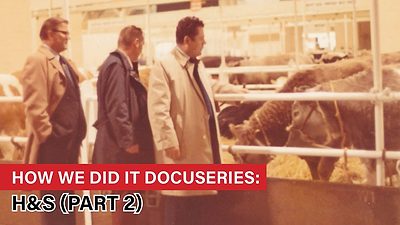For many dealers, selling their business will be the most important transaction of their career. But according to Anthony Nasca, partner of the Stanek Group at Morgan Stanley, 83% of dealership owners don’t have an exit plan in place, and 98% aren’t sure of the value of their business. And after the sale, 88% of dealer principals weren’t satisfied with the transaction.
During a panel at the 2023 Associated Equipment Distributors Summit held Jan. 10-12, partners at Morgan Stanley and brokers at Performance Brokerage Services sat down to discuss what dealers need to prepare before selling their dealership.
Strong Dealer M&A Market
Brad Stanek, financial advisor at Morgan Stanley, says dealers looking to sell their dealership today are following a period of record dealership M&A activity, though that may begin to slow.
“Where we were just a few years ago, up until let’s say the past 6 months, was that we had massive government stimulus, extremely low cost of capital, supply chain issues that actually worked to our advantage and there was a lot more demand than supply,” says Stanek. “So margins were excellent, generating significant amounts of excess cash and making it a great environment for those who sold their dealership at some of the highest values in history.
“Obviously, things have changed. We have a much higher cost of capital right now. We have a looming recession, definitely an economic slowdown, and we know that’s going to impact profitability and margins.”
Performance Brokerage Services Partner Dan Argiro says, however, that he views the current landscape of equipment dealer merger and acquisition activity as still very strong.
“So the buy-sell machinery market over the last couple of years has been, ‘Here’s your evaluation,’ and the next answer is, ‘Show me the money,’” says Argiro. “It’s just been that way, and today the buy-sell market is still very strong. There’s a lot more buyers than there are sellers. Businesses have a lot of cash. They have opportunity to make moves if they so choose. Value of dealerships are still up, and buyers are still hungry for deals.”
Evaluating Your Parts Inventory
Establishing the value of your parts inventory can be tricky, says Argiro, especially if your stockpile goes back a few generations.
“Everybody runs their business differently, and if you keep a clean parts inventory — 12 months’ worth of returnable parts, not a lot of obsolescence — then the number that’s on your balance sheet is pretty true,” says Argiro. “If you’ve got $5 million worth of parts, and they go back to when your grandfather started the business, that’s going to be a little challenging. That doesn’t mean anything past 12 months or 18 months is worth zero, but full value for parts that are returnable or that you can take a couple of parts and put them together in a box and make that a returnable part, you’re going to get full value for.”
Furniture, Fixtures & Equipment
When considering what items like furniture and special tools are worth, Argiro points out that even desks and older tools that aren’t used often will still bring value to the table.
“FF & E (furniture, fixtures and equipment), including special tools, is always a big one,” says Argiro. “Dealers might think, ‘I only use it half the time, and it’s tens of thousands of dollars’ worth of equipment sitting in a locker covered in dust.’ But there’s still value there, because if somebody comes in to transition, they’re going to need all that. Even if it’s the dealer next door, unless they’re closing your facilities down, they need those special tools.
“They need the desks too unless they own an office company. Just because you paid a thousand dollars for a desk either to depreciate it all accelerated in the first year or expense it, however it’s going to show up on the books there’s value for that.
Sell or Lease Your Land?
Dealers selling their locations will need to make an important decision regarding their real estate: sell it or lease it.
“Sometimes, 1 plus 1 can equal 3. And by that I mean, you can take a piece of property valued at a $1 million, and if you structure the deal correctly, then money from the business can either be allocated to the real estate, or you can choose not to sell the real estate for $1 million, because that’s all you’re going to get,” says Argiro. “If you sell it, that’s the last dime you will get out of that piece of property. If you continue to lease the property, you’re adding dollars depending on how long you want to lease the property. Of course what condition it’s in is important too. But that’s how you can get 1 plus 1 equals 3. That extra 1 is structuring the deal with what you’re going to do with the property.”
“We’ve seen buyers who have to buy the real estate. It’s part of the transaction, they want to buy the real estate,” says Pat Albero, partner at Performance Brokerage Services. “On the other side, some of these bigger groups who are growing exponentially don’t want to buy the real estate. Our goal is to keep our clients’ minds open to any option as they explore. There’s no wrong or right answer until we get to the bottom line at the end of evaluation.”
What is Goodwill/Blue Sky Worth?
Argiro refers to goodwill as the “X factor” that enters into the evaluation process, which can encompass your company’s reputation, having good business systems in place and even having loyal customers. And he gives an example in which it can be a big payday for dealers.
“Outside the assets of the business, cash you have on hand, notes, old notes owed to shareholders, the big piece for your life’s work is the blue sky goodwill piece,” says Argiro. “As an example, we could put together a $30 million walk away. When we say walk away, this is the money you’re taking away with you at the end of the day. Part of that includes $3 million for parts, $3 million for furniture, fixtures and equipment, $3 million cash on hand, $8 million real estate and $10 million blue sky or goodwill. On a closing statement, that’s what you will see.”
Timeline to Exit
For dealers looking to sell their business, Argiro says the process generally takes 4-6 months from beginning to end. For anyone considering taking this route, however, he says that process needs to start today.
“If you’re looking at valuing a business or you’re talking to your neighbor next door because you want to buy their business and they don’t understand what the value of their business is, the timeline begins today,” he says. “Life happens, nobody expected COVID. Pat and I just did a deal where the seller wasn’t really selling. The owner of the business for 50 years passed away unexpectedly, and that’s the worst case scenario we come up against. The family was not approved to run the business. Everybody was grief stricken and their net worth was tied into the business. The family had 10 family members in the business trying to work through the succession plan, but they just couldn’t get to the end result of making sure that the documents were put together.
“The timeframe from today until you receive that big lottery check is about 4-6 months. And that’s with good books, and if you have an accountant who has M&A experience. You need to have a buy-sell attorney who has M&A experience, not your buddy from high school. Using that buddy would do 2 things. It could kill a deal, and the deal could last a lot longer, which is much more expensive for you.”
Have the Right People Involved
Assembling the proper crew for navigating an exit from the business is crucial, says Stanek, including the dealer-principal keeping up with the day-to-day of the business.
“What’s often forgotten is that one of the most important people on that deal team is you. Too often we see a dealer who’s getting ready to sell check out,” Stanek says. “This deal could be longer than a year. If I check out as an owner and the performance of the business suffers, the buyer could re-trade the deal and ask for a lower amount once they see the financials are slipping off or drop out of the deal altogether. It’s important you keep running the business as if you’re not going to sell.”
Dealers will need to work with an attorney, a CPA and a broker to get the best out of their exit, says Stanek. The broker in particular can seem like a high expense, but Stanek says the value dealers get back from their representation should be worth it.
“The attorney is critical, because there’s 2 key agreements you’re going to sign: a letter of intent and the definitive agreements. Those agreements are most often drafted by the buyer’s attorneys in favor of the buyer. You need an attorney who understands those documents so they can help make those fair for you and them.
“The CPA needs to be somebody who doesn’t just do tax returns. They need to understand how they can help you to save money looking forward, not telling you what you owe after the deal is done. The business broker is there to get multiple offers so you’re maximizing your value. A lot of times we hear, ‘Well, it costs a lot of money to have a business broker represent me.’ In many cases, the right one will not only cover what you pay for them to market the business but also give you a much higher price than what you would’ve gotten if you tried to do it alone with one of your advisors.”
When it comes to a dealer’s financial advisor, Stanek says it’s important to find one with good experience in dealer M&A activity. “The buyer’s advisor has done a ton of dealer acquisitions, and we need to be able to match experience with experience,” he says.
“We see many dealers who’ve got a financial advisor in place just waiting for that check to come after the deal closed,” says Stanek. “The financial advisor plays a key role before the deal even begins on the planning site. They’re the quarterback coordinating and making sure the attorney, the CPA and the business broker are all on the same page. They’re able to make sure the right plan is in place, and you’re able to hit the numbers that are most important to you. And then lastly, they handle the investment strategy, making sure the proceeds last the rest of your life.”







Post a comment
Report Abusive Comment